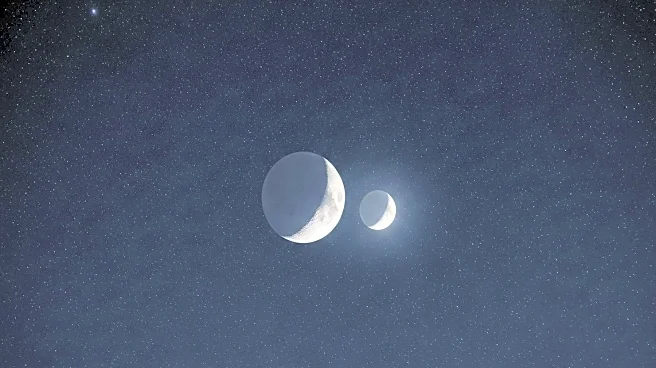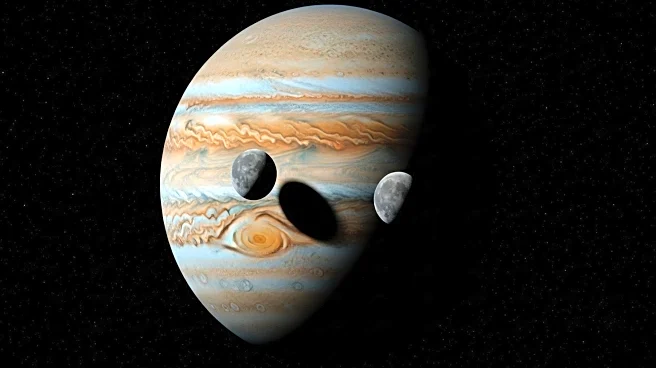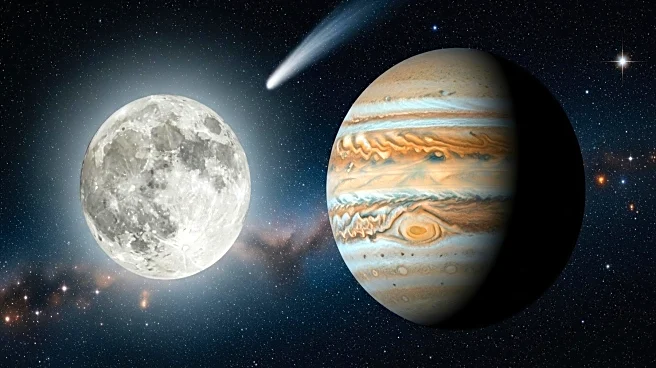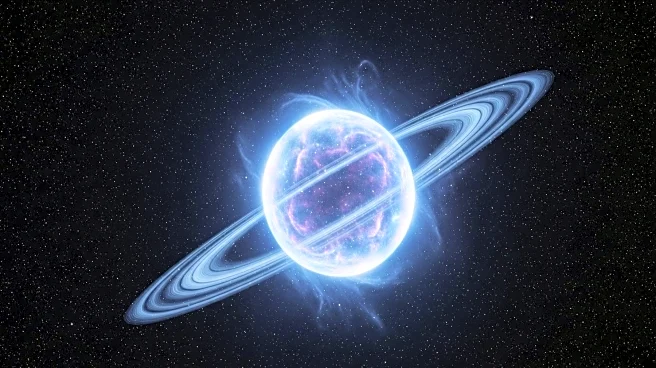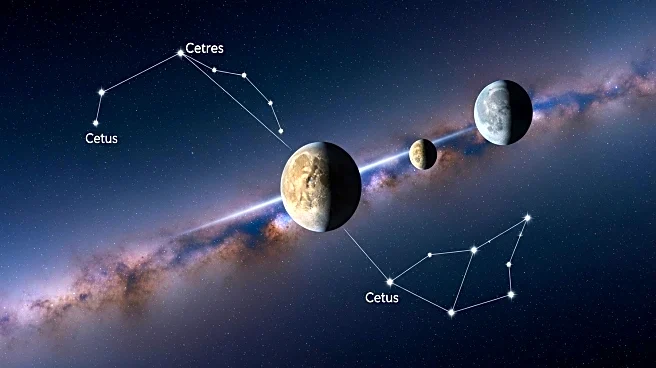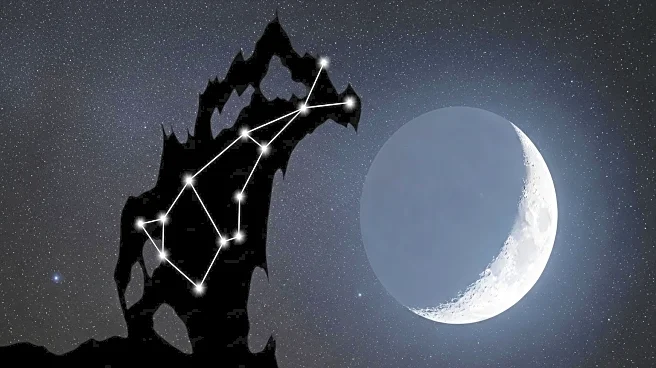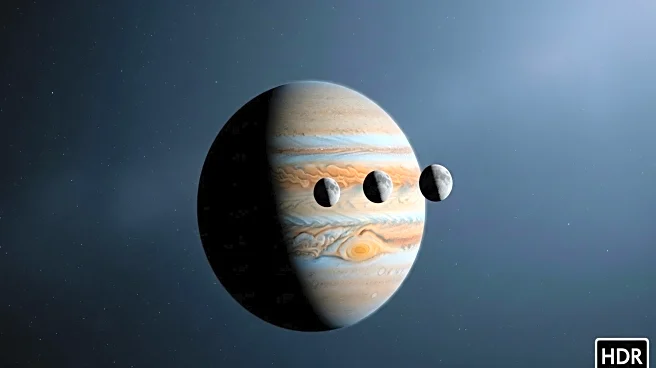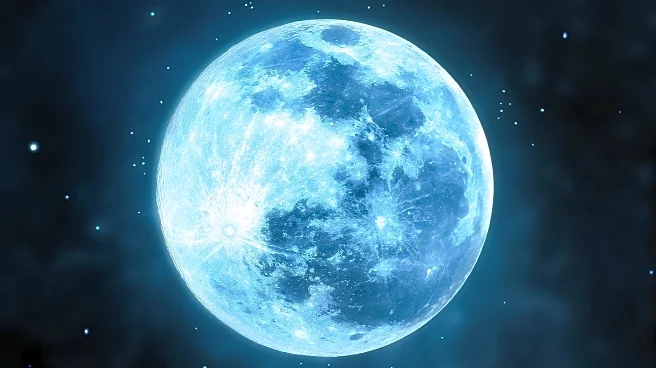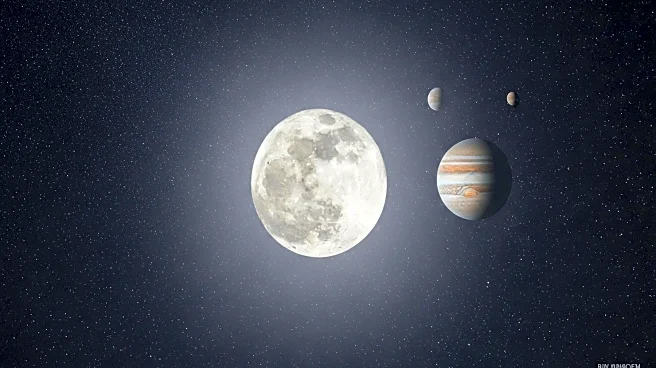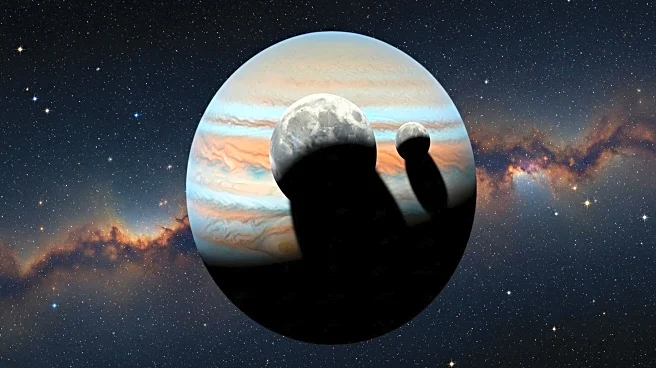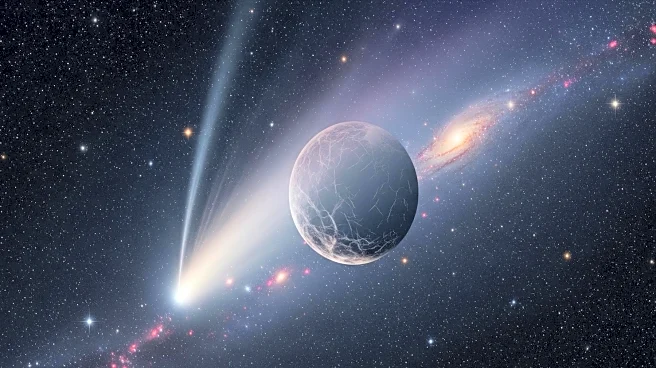What's Happening?
The Last Quarter Moon phase occurred on October 12, 2025, at 2:13 P.M. EDT, as reported by Astronomy Magazine. On the same day, the Moon passed 4° north of Jupiter at 6 P.M. EDT, with Jupiter shining at a magnitude of -2.2, making it the brightest point in that region of the sky. This celestial event allowed telescopic observation of Jupiter's four Galilean moons: Callisto, Io, Europa, and Ganymede. The stars Castor and Pollux, part of the Gemini constellation, were also visible near Jupiter, with Pollux being slightly brighter. The Moon and Jupiter were visible in the early morning hours of October 14, providing a spectacular view for stargazers.
Why It's Important?
This celestial event is significant for astronomers and stargazers as it provides an opportunity to observe Jupiter and its moons, as well as the stars Castor and Pollux, in a unique alignment. Such events contribute to the understanding of planetary movements and celestial mechanics. Observing the Last Quarter Moon phase alongside Jupiter offers insights into the dynamics of the solar system and aids in the study of lunar and planetary interactions. It also enhances public interest in astronomy, encouraging educational and recreational activities related to stargazing.
What's Next?
Future celestial events will continue to provide opportunities for observation and study. Astronomers and enthusiasts can look forward to upcoming alignments and phases that offer similar viewing experiences. The ongoing study of celestial mechanics and planetary movements will benefit from these observations, contributing to scientific knowledge and public engagement with astronomy.
Beyond the Headlines
The alignment of the Moon and Jupiter, along with the visibility of the Galilean moons, highlights the intricate dance of celestial bodies in our solar system. Such events underscore the importance of continued investment in astronomical research and technology, which can lead to new discoveries and a deeper understanding of the universe.
